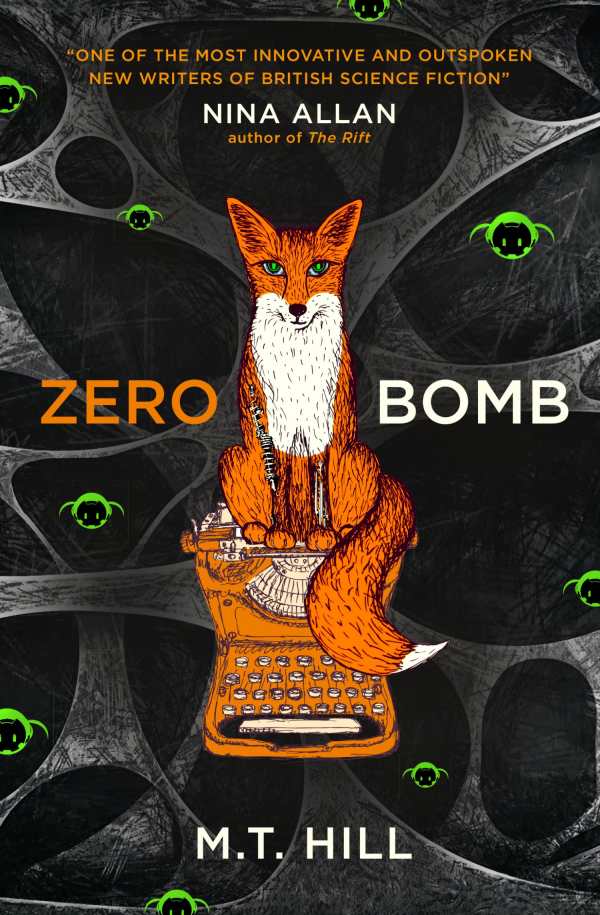Zero Bomb
Even a surveillance state can’t see everything. M. T. Hill’s Zero Bomb is set in a near-future England. Industries have been automated for ease, non-Christian religions have been abolished, people are digitally tracked, and many books have been banned: “innocence gave way to cynicism, and the fascia of civilization was picked at, slowly elided.”
In rural England, Remi starts avoiding the news, worried about what the bleakening future will hold for his daughter, Martha. But then Martha dies, and nothing feels worth committing to.
After cycling through drug use and reinvention, Remi is beckoned to an old spy safe house in London, where Lauren Brace, a charismatic separatist leader, reveals that Martha may be alive after all. Remi is hopeful that they’ll be reunited; in exchange for connecting them, though, Brace requires Remi to assist with a planned attack on the state.
Nothing is as it seems in Hill’s England. A green-eyed fox exudes the appeal of the wild but turns out to be a programmed cog in dark designs. A state that proclaims to provide is also one that strips people of their purpose. Images are disquieting: of cars that drive themselves but leap curbs to plow into crowds, of cities blinking into chaos, of fields of engineered human parts.
Portions of The Cold Veil—Brace’s postapocalyptic novel-cum-manifesto—are included in the text, and they roil with their own discomfiting visions and unnerving images. Martha emerges as the book’s true protagonist, though her strength is quiet at first, her savviness revealed on a need-only basis.
Zero Bomb is a bold and alarming vision of an automated future and those who might resist it.
Reviewed by
Michelle Anne Schingler
Disclosure: This article is not an endorsement, but a review. The publisher of this book provided free copies of the book to have their book reviewed by a professional reviewer. No fee was paid by the publisher for this review. Foreword Reviews only recommends books that we love. Foreword Magazine, Inc. is disclosing this in accordance with the Federal Trade Commission’s 16 CFR, Part 255.

